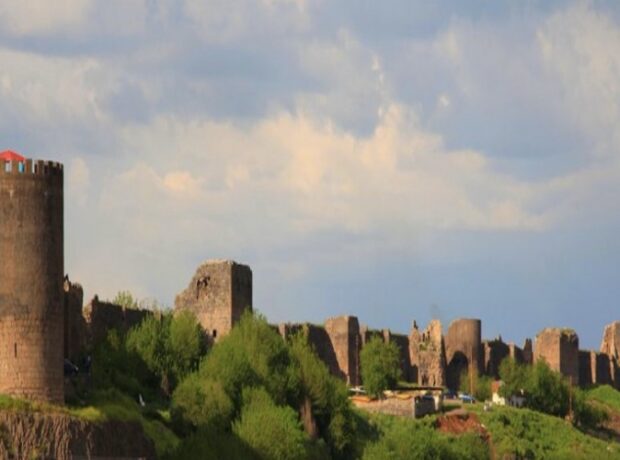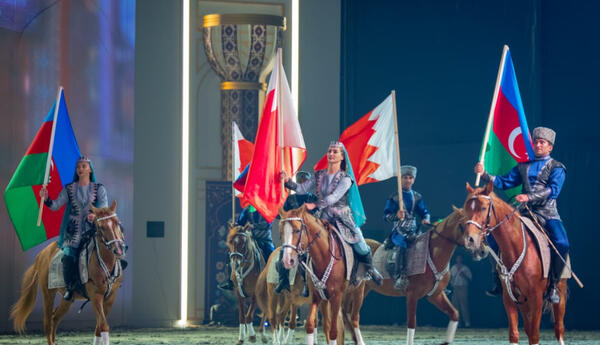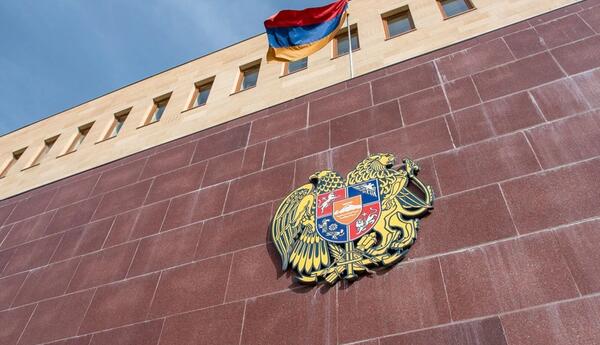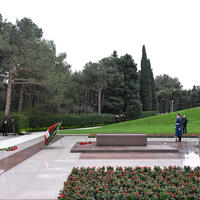Diyarbakir Fortress, one of the longest, widest and strongest walls in the world after the Great Wall of China and Istanbul, is also the second largest historical monument visible from space after the Great Wall of China.
Diyarbakir Fortress consists of two parts, an inner and an outer fortress.
The four main gates of Diyarbakir Fortress are the Mountain Gate (Harput Gate) in the north, Urfa (Greek Gate) in the west, the Mardin Gate in the south and the New Gate in the east.
The walls of the Diyarbakir fortress, which is estimated to be about nine thousand years old, were included in the UNESCO World Heritage List in 2015.
The parameter of the walls is about 5200 meters. The total length of the castle walls, including the inner tower, is about 5,800 meters. The 645-meter-high castle wall was demolished for various reasons. There are 82 towers in the castle.
Diyarbakir Fortress was built in the form of a wall surrounding the entire city. Along with the castle, the defensive walls are believed to have been built by the local population of the region in the 4th millennium BC. The castle was later restored by the Byzantine emperor Constantine.
Just as every architectural monument has a history, these towers have their own legends. According to legend, the master and his student bet on the construction of the most beautiful building. On the south side of the walls, the master who built the Seven Brothers Fortress and the student who built another fortress next to it asked the crowd, "Am I the winner or you?". However, the master saw the superiority of his student's art and threw himself from the castle. The disciple who could not stand his master's death also threw himself after him. The place where the story of rivalry and friendship between the teacher and the student takes place is known as Ben-u Sen, which means "Me and You".
Bütün xəbərlər Facebook səhifəmizdə
Other news

Latest news
Azerbaijan, Türkiye to enhance mutual military security
Politics 17:33Ilham Aliyev congratulates King of Bahrain
Politics 14:43Armenia expects new shipment of grain through transit via Azerbaijan soon
Economy 15 Dekabr 17:43Mirzoyan: Yerevan welcomes EU participation in infrastructure projects in South Caucasus
Politics 15 Dekabr 16:48ANAMA: 838 hectares cleared of mines last week
Social 15 Dekabr 16:27Israeli Embassy in Baku publishes Hanukkah greetings
World 15 Dekabr 15:41Karabakh horses showcased at festival in Bahrain
World 15 Dekabr 15:14Azerbaijan to launch Single Window digital system for trade and logistics
Technology 15 Dekabr 14:56Armenian Defense Ministry: Situation on border with Azerbaijan is calm
World 15 Dekabr 14:20Baku Initiative Group highlights Belgian colonial atrocities
World 15 Dekabr 13:25State Security Service exposes corruption of former Balakan executive head
Event 15 Dekabr 12:34Azercell successfully renews international quality management certification
Social 15 Dekabr 12:21Azerbaijan to develop nearly 3,000 new state standards by 2028
Economy 15 Dekabr 11:31Karimli stresses Azerbaijan's role in interreligious and intercultural dialogue
Culture 15 Dekabr 10:43Global community marks World Turkic Languages Day for the first time
Culture 15 Dekabr 10:19Another group of families relocated to Horovlu village in Azerbaijan's Jabrayil
Social 15 Dekabr 09:50Sydney beach shooting death toll rises to 16
World 15 Dekabr 09:18Leipzig Zoo kills all Dalmatian pelicans due to bird flu
Health 13 Dekabr 14:48US evaluates Azerbaijan's role in bringing its oil, gas resources to int'l markets
Economy 13 Dekabr 13:25EU Council decides to perpetually block Russian sovereign assets
Economy 13 Dekabr 12:34Witkoff to meet with European leaders, Zelenskyy in Berlin
World 13 Dekabr 11:46UEFA to transfer over €5.5M to AFFA as part of its solidarity payments program
Sport 13 Dekabr 11:00China's Kuaizhou-11 Y8 rocket launches experimental spacecraft
Technology 13 Dekabr 10:23Azercell promotes social responsibility and environmental awareness among children
Social 13 Dekabr 09:44Baku hosts event commemorating National Leader Heydar Aliyev
Social 13 Dekabr 09:28Over 40,700 marriages and 17,200 divorces registered in Azerbaijan
Social 12 Dekabr 16:34Azerbaijan's population exceeds 10 million as of November 2025
Social 12 Dekabr 15:27Azerbaijan supports Turkmenistan' UN-backed Neutrality University initiative
Politics 12 Dekabr 14:42Tokayev: Baku-Yerevan peace to open up new opportunities for region
Politics 12 Dekabr 13:33Azerbaijani officials commemorate Heydar Aliyev at Alley of Honor
Social 12 Dekabr 12:28Parviz Shahbazov: Azerbaijan-US energy partnership enters new strategic phase
Economy 12 Dekabr 10:2322 years pass since national leader Heydar Aliyev's death
Social 12 Dekabr 09:31Kapital Bank сontinues cybersecurity training initiatives
Economy 11 Dekabr 18:45Prime Minister Asadov to represent Azerbaijan at Turkmenistan neutrality anniversary
Politics 11 Dekabr 17:43Population of Azerbaijan's Nakhchivan grows
Social 11 Dekabr 16:37Hungary to purchase 800 million cubic meters of gas from Azerbaijan under two-year deal
Economy 11 Dekabr 16:00President Ilham Aliyev makes phone call to Gurbanguly Berdimuhamedov
Politics 11 Dekabr 15:23US forces in Caribbean inadequate for ground invasion of Venezuela — Politico
World 11 Dekabr 14:27Trump says US will keep oil from detained tanker
Economy 11 Dekabr 13:46US Federal Reserve cuts rate to 3.5-3.75% per annum
Economy 11 Dekabr 12:30Trump says US will keep oil from detained tanker
World 11 Dekabr 11:11Putin and Iranian president to meet in Turkmenistan
Politics 11 Dekabr 10:37Azerbaijan, Iraq held second consular consultations
World 11 Dekabr 10:00Azerbaijan was elected to two UN Commissions
World 11 Dekabr 09:23Elchin Amirbayov, Belgian officials mull expanding Baku-Brussels economic cooperation
Politics 10 Dekabr 17:44Media: Baku optimistic about peace process with Yerevan in 2026
World 10 Dekabr 16:31Azerbaijan expands its air connectivity with Europe: Direct Baku–Bratislava flights to launch
Tourism 10 Dekabr 15:23President Ilham Aliyev receives UK and Northern Ireland's Trade Envoy to Azerbaijan
Politics 10 Dekabr 14:50Azerbaijan opens official tourism office in Istanbul
Tourism 10 Dekabr 13:37Bir Ecosystem concludes last month with innovations
Economy 10 Dekabr 12:31Azerbaijan, US discuss launching TRIPP project in short time
Economy 10 Dekabr 12:23Azerbaijan's Central Bank lowers key interest rate to 6.75%
Economy 10 Dekabr 11:43Trump to hold closed-door roundtable discussion on unannounced topic
World 10 Dekabr 10:25UEFA Champions League: Qarabag to face Ajax in Baku today
Sport 10 Dekabr 09:17Azercell enhances Kinonapp with AI-powered features
Social 9 Dekabr 17:41Kyrgyzstan interested in using capabilities of Azerbaijani satellites
Technology 9 Dekabr 17:33Azerbaijan, US discuss acceleration of TRIPP project
Economy 9 Dekabr 16:28Ilham Aliyev holds one-on-one and expanded meetings with Speaker of National Council of Slovakia
Politics 9 Dekabr 14:44Birbank Star: your seamless spending solution
Economy 9 Dekabr 14:33Azerbaijan may include childhood cancer treatment in compulsory health insurance system
Health 9 Dekabr 14:28Official banquet hosted in Bratislava in honor of President Ilham Aliyev
World 9 Dekabr 14:18Azerbaijan's strategic foreign exchange reserves reach $83.5 billion
Economy 9 Dekabr 13:45Ali Asadov: New strategic challenges and goals formed for next four years
Economy 9 Dekabr 13:22Bakcell introduces new “GO” tariffs with enhanced benefits
Technology 9 Dekabr 13:14Azerbaijani parliament approves draft state budget for 2026
Economy 9 Dekabr 12:24Deputy FM Rzayev highlights Azerbaijan's green transition policy at Doha Forum
Politics 9 Dekabr 11:18Azerbaijani delegation participates in BRIDGE Summit in Abu Dhabi
Social 9 Dekabr 10:30Japan refuses European plan to seize Russian assets
World 9 Dekabr 09:50Trump threatens Mexico with new tariffs
Politics 9 Dekabr 09:15Moderate geomagnetic storm expected in coming days
Health 8 Dekabr 17:41Azerbaijan ready to share reconstruction experience with Syria
World 8 Dekabr 16:28FM: No final decision on participation of Azerbaijani military personnel in Gaza
World 8 Dekabr 15:33President Ilham Aliyev receives delegation led by Iranian Foreign Minister
Politics 8 Dekabr 14:25Earthquake with magnitude of 5.8 occurred in Alaska — USGS
Event 8 Dekabr 13:46UN Security Council will hold a meeting on Ukraine on December 9
Politics 8 Dekabr 12:29Cambodian military again opened fire on the border with Thailand — army
World 8 Dekabr 11:11Royal Thai Air Force carried out airstrikes on Cambodian armed forces positions
Event 8 Dekabr 10:43Nigerian air force strikes putschists in Benin — agency
Event 8 Dekabr 09:16Draw for 2026 World Cup announced
Sport 6 Dekabr 13:17Washington and Kyiv discussed Ukraine’s post-war reconstruction prospects
Politics 6 Dekabr 11:35S&P Global revises outlook on Azerbaijan to positive
Economy 6 Dekabr 10:23Jeyhun Bayramov: Azerbaijan's priority is ensuring regional development and peace
World 6 Dekabr 09:15Moody's identifies main drivers of strengthening Azerbaijan's long-term economic prospects
Economy 5 Dekabr 17:29Hikmat Hajiyev meets with NATO official
Politics 5 Dekabr 16:38Ilham Aliyev congratulates King of Thailand
World 5 Dekabr 15:20A Basic Life Support training was held for employees at the Central Customs Hospital
Health 5 Dekabr 15:09Iran's foreign minister to visit Azerbaijan on December 7
Politics 5 Dekabr 14:45Private news
Digər xəbərlərErgophobia explained: Why some struggle to show up for work
Social 8 Sentyabr 13:04President Ilham Aliyev congratulates Donald Trump
Politics 4 İyul 11:37Accuracy of landmine maps provided by Armenia was 25%
Politics 4 Aprel 09:32Presidents of Azerbaijan and Iran exchange congratulations on Ramadan holiday
Politics 31 Mart 15:39Central Asian Countries' War on Gas
Politics 14 May 2024 18:03Seventh International Mugham Festival 'Kharibulbul' held in Shusha
Culture 13 May 2024 18:07
Redactor's choice
Popular
Exchange rates
-
 USD
1,7000
USD
1,7000
 0,00%
0,00%
-
 EUR
1,9977
EUR
1,9977
 +0,16%
+0,16%
-
 GBP
2,2726
GBP
2,2726
 +0,07%
+0,07%
-
 RUB
2,1379
RUB
2,1379
 +0,66%
+0,66%

2008-2025. Səs İnformasiya Agentliyi, Bütün hüquqlar qorunur. Məlumatlardan istifadə etdikdə istinad mütləqdir.
İfadə olunan fikirlərə sayt məsuliyyət daşımır.
Ünvan: Ü. Hacıbəyov küçəsi, 66; Bakı, Azərbaycan.
Email: [email protected] Tel.: (+994 12) 598-33-90; Faks: (+994 12) 493-11-62;




























